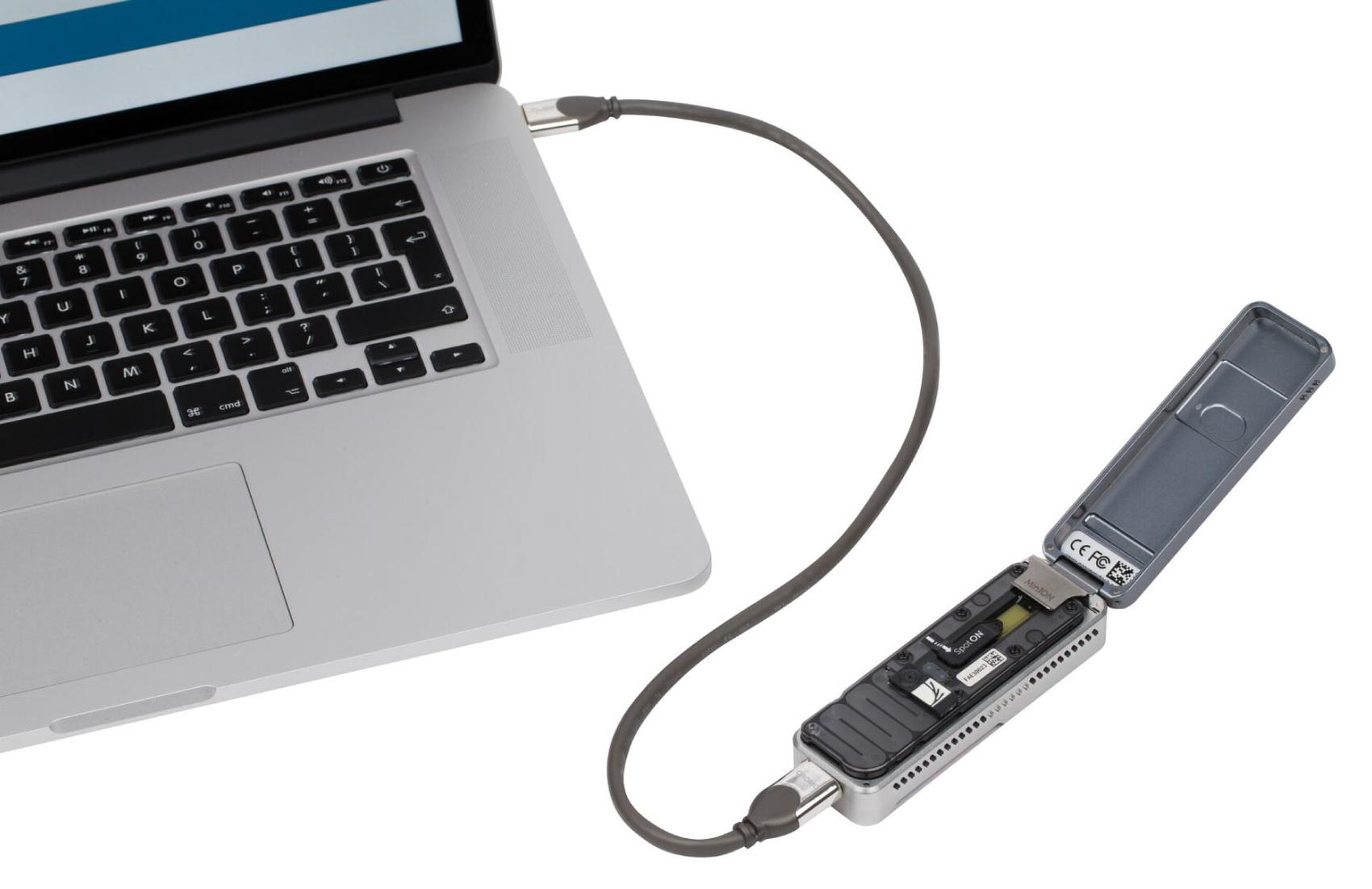How genomics is changing health care
By Jessica Werb

DNA sequencing is creating a new age of health and medicine that is more personalized and targeted than ever before
Sitting in an office cluttered with books and papers, Dr. Terry Snutch, professor at UBC’s Michael Smith Laboratories and Djavad Mowafaghian Centre for Brain Health, picks up a small rectangular object.
Compact and light enough to carry in a pocket, it could easily be mistaken for a flip phone. But it is, in fact, a portable DNA sequencer — and it costs less than an iPhone 12.

Developed by Oxford Nanopore Technologies with help from Dr. Snutch’s team, the MinION sequencer is being used in BC to screen and track COVID-19 variants of concern. But there’s nothing stopping anyone from purchasing the $1,000 device for their own personal use.
“You could do a swab from your mouth, isolate some DNA, and put it on there and look at your own genome,” says Dr. Snutch, cofounder of Canada’s COVID-19 genome sequencing network (CanCOGeN). “You’d have to have the software skills to do the analysis, but this is the ultimate in personalized genomics.”
A new age in medicine
Society is sitting on the cusp of an era of consumer-level genomics and genomic sequencing. Advances in genomic research have ushered in a new age of health and medicine that is more personalized and targeted than ever before.
It is now possible to sequence an entire individual human genome in a matter of days. This is the type of technology powering the Personalized Onco-Genomics (POG) program at BC Cancer, an experimental trial initiated in 2012 that uses DNA sequencing to uncover new treatment options for cancer patients.
“We certainly know that that some genes are involved in causing cancer more than others,” explains Dr. Steven Jones, UBC professor in the Faculty of Medicine, and co-director and head of bioinformatics at Canada’s Michael Smith Genome Sciences Centre (GSC) at BC Cancer.
“What genes the cancer cajoles into helping it become a tumour is somewhat random, resulting in different people — who may have clinically identical-looking tumours — presenting very different genetics,” says Dr. Jones.

To fully understand what is occurring in patients with treatment-resistant tumours, the POG program sequences the entire genome of each trial participant twice: once on their healthy tissue, such as blood, and again on their tumour.
Using computational analysis, researchers then compare these sequences to determine where mutations have occurred and which genes are involved. Occasionally, the results are surprising — and lifesaving.
“In one case, we found a tumour that we predicted would respond to high blood-pressure medication. And it worked,” says Dr. Jones. “These cases are few and far between but this demonstrates that if you understand a disease fundamentally, you can find new and actionable therapeutic targets.”
The rise of epigenetics
Scientists are now able to sequence not just the genome but the epigenome — chemicals, called methyls, that attach to DNA to turn genes on or off.
Dr. Denise Daley, associate professor in the Faculty of Medicine and a principal investigator at the Centre for Heart and Lung Innovation, is studying the genetics and epigenetics of asthma and allergies using longitudinal data collected over years from high-risk individuals from birth.
“By the time most kids are diagnosed with asthma, airway remodeling has occurred and it’s irreversible,” she says. “If we’re going to intervene, we have to intervene before you would reach a clinical diagnosis.”

Currently, Dr. Daley notes, there is no diagnostic test for asthma.
“We’re hoping to be able to identify if there is a signature, a difference between methylation in those that have early and persistent asthma versus those that don’t, or those whose asthma resolves by the teen years,” she says. “By identifying that methylation signature, we think we can identify and look at diagnostics and prevention.”
The next decade of health care
At the moment, genetic screening is reserved for those individuals who need it for a diagnostic test or treatment. But researchers say it’s only a matter of time before genetic sequencing becomes a routine part of everyday health.
“In 10 or 20 years, everyone will have their genome sequenced,” predicts Dr. Liam Brunham, associate professor in the Faculty of Medicine and a principal investigator at the Centre for Heart Lung Innovation, who studies the role of genetics in premature cardiovascular disease and treatment outcomes. “If we start to actually combine population-level genetic information with information around health outcomes, that’s going to be a real game changer in terms of our just understanding of how genetic influences can alter an individual’s risk for health and disease.”
“In 10 or 20 years, everyone will have their genome sequenced.”
Dr. Liam Brunham
associate professor, Faculty of Medicine
With the advent of cheap, accessible genetic tools like the MinION device, Dr. Snutch says, we will likely reach a time when we not only sequence our DNA, but also track how exercise, diet, drugs, and other environmental factors change it.
“With this type of technology, you could get to the point where you’re following your own epigenetic changes throughout life,” says Dr. Snutch.
In a world of health apps, step counters and activity monitors, it’s not hard to see how a DNA scanner may become just another tool in our pursuit of health and longevity.
Jessica Werb is a freelance writer for UBC Brand and Marketing. This article was published July 23, 2021.
Feel free to republish the text of this article, but please follow our guidelines for attribution and seek any necessary permissions before doing so. Please note that images are not included in this blanket licence.


